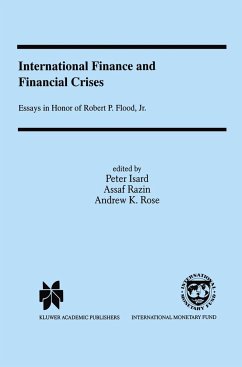
Management and Control of Foreign Exchange Risk

PAYBACK Punkte
77 °P sammeln!
Since I first published Management of Foreign Exchange Risk (Lexington Books, 1978), financial innovation-spurred, in part, by exploding volatility in currency prices-has revolutionized the theory and praxis of foreign exchange risk management. Old-fashioned forward contracts have surrendered market share to currency swaps and options as well as to their perpetually multiplying derivatives. Interestingly, forex derivatives now provide a low cost and highly efficient method of transferring risk from the firms that are exposed to risk but which would rather not be (i. e. , risk-hedgers) to those...
Since I first published Management of Foreign Exchange Risk (Lexington Books, 1978), financial innovation-spurred, in part, by exploding volatility in currency prices-has revolutionized the theory and praxis of foreign exchange risk management. Old-fashioned forward contracts have surrendered market share to currency swaps and options as well as to their perpetually multiplying derivatives. Interestingly, forex derivatives now provide a low cost and highly efficient method of transferring risk from the firms that are exposed to risk but which would rather not be (i. e. , risk-hedgers) to those which are not exposed but which-in exchange for a fee-would assume some exposure to risk (i. e. , risk bearers). Perhaps more importantly, foreign exchange risk management, which was once a fairly mechanical task confmed to the international treasury function, is now permeating global strategic management. Indeed, since the demise of the Bretton Woods system of pegged exchange rates, the cost of forex hedging instruments has fallen so dramatically that firms can readily avail themselves of hedging products which can reduce unwanted risk, thereby potentially gaining a competitive advantage over rivals that do not. Management and Control of Foreign Exchange Risk has grown out of a fundamental revision of my earlier work published almost 20 years ago. In the process, my thinking about risk and its mathematics has greatly benefitted from my association with John Cozzolino and Charles Tapiero.














